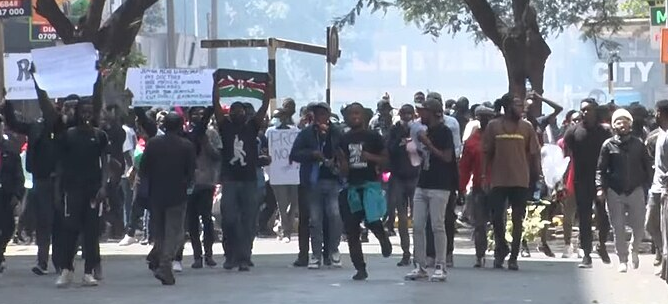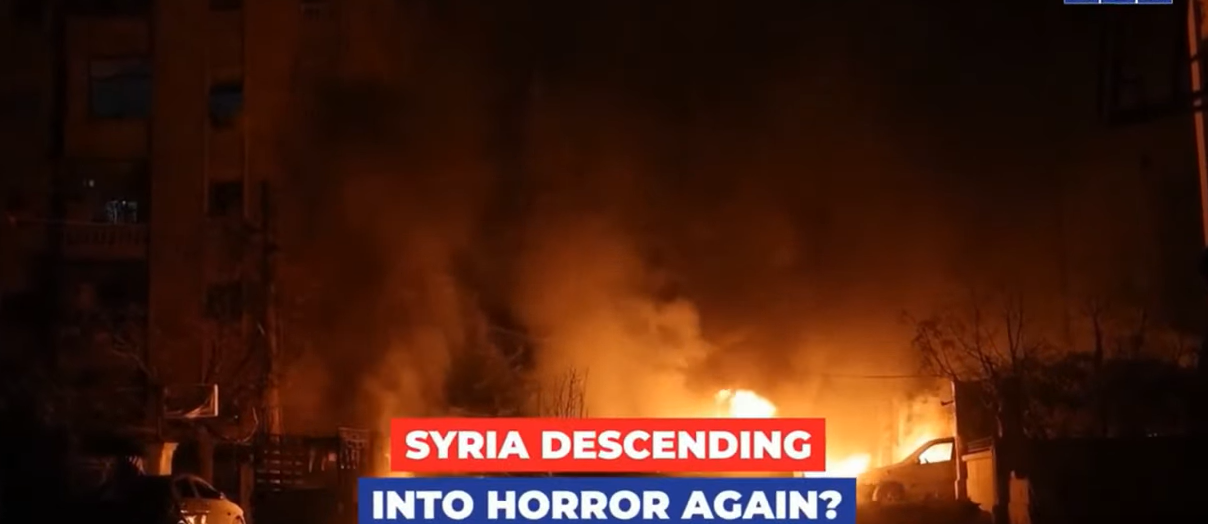[Book Excerpt #3 on: “The Roots of Racism in American Policing”]
Southern policing, which morphed from these vigilante-style Slave Patrols, would soon show its pernicious effects—especially, in cases where southern sheriffs collaborated with lynch-mobs, and racist groups like the Ku Klux Klan.
Photo: YouTube
Sandra Bland, 28, murdered by American policing, on July 13, 2015.
The following is an excerpt from the upcoming book “The Roots of Racism in American Policing: From Slave Patrols to Stop-and-Frisk.”
Over the next few weeks, the Black Star News will be publishing selected portions from the book. The following excerpt is from Chapter 1.
In the book, “Police in America: An Introduction,” the authors say the following: “The Slave Patrol was a distinctly American form of law enforcement. In southern states where Slavery existed, it was intended to guard against Slave Revolts and capture runaway Slaves. In some respects, the Slave Patrols were the first modern police forces in this country. The Charleston, South Carolina, Slave Patrol had about 100 officers in 1837 and was far larger than any northern city police force. (3) In fact, the post-Slavery focus of this nation’s policing would be directed primarily at African-Americans—all across America, and not just in the south.”
Dr. Gary Potter also says that in the southern states “the development of American policing followed a different path. The genesis of the modern police organization in the South is the “Slave Patrol” (Platt 1982). The first formal Slave Patrol was created in the Carolina colonies in 1704 (Reichel 1992).” Others state that the first Patrols originated in 1671, in South Carolina.
By 1819, in the South Carolina General Assembly, a law was enacted requiring all White men over the age of 18 to volunteer for Slave Patrol policing duties. These Slave Patrols were White citizen patrols. Non-participation was punishable by fines. Through these means, wealthy White plantation owners made regular working and poor Whites responsible for the policing and terrorism of Blacks.
According to P.S. Foner, in his “History of Black Americans from Africa to the Emergence of Cotton,” the “Slave Patrols had full power and authority to enter any plantation and break open Negro houses or other places when Slaves were suspected of keeping arms; to punish runaways or Slaves found outside their plantations without a pass; to whip any Slave who should affront or abuse them in the execution of their duties; and to apprehend and take any slave suspected of stealing or other criminal offense, and bring him to the nearest magistrate.”
These Slave Patrols, in time of relative calm, when there were no Slave revolts and such, would often spend their time harassing and beating Slaves. They were defenders of white supremacy. Slave Patrols would invade the homes of Blacks whenever they felt like. Doesn’t this remind you of Blacks, like Atatiana Jefferson, and Botham Jean, being murdered in their own homes? In recent years, we’ve heard a lot of hypocritical talk about the sanctity of the Second Amendment, (which I will explore later in this chapter) it should be noted that these Slaves Patrols would look particularly for weapons and ammunition in the possession of Blacks.
Stono Rebellion and Slave Patrols
One important historical incident we must speak of, as it relates to the Slave Patrols, is the 1739 Stono Rebellion in South Carolina. On that fateful night, approximately 20 Slaves reportedly of Kongolese origin, from the Kingdom of Kongo (present-day Angola) rose up in rebellion and burned several plantations killing their White masters as they started their march toward a bid for freedom. They were determined to escape to then Spanish Florida, which was a refuge for escaped Slaves and Native Americans.
During their uprising for freedom, they slaughtered around two dozen White people as they attempted to emancipate themselves. The Slaves, led by an African named “Jemmy,” also known as “Cato,” marched on their way beating drums, singing, and chanting “liberty.” The numbers of rebel Slaves swelled to around 70 along the way.
Colonial authorities in South Carolina deployed a White militia, upwards of 100 men, to engage Jemmy and the rebels. Outnumbered—and outgunned—these brave Slaves were fired upon. When the dust cleared, around 50 Slaves and 20 Whites lay dead. To terrorize, and warn other Slaves from participating in future uprisings, the colonists mounted the severed heads of dead Slaves on stakes along major roads. Surviving Slaves from the rebellion were sent to the Caribbean.
One of the responses in the aftermath of the Stono Rebellion was the introduction of the Negro Act of 1740. This law further restricted the movement of Slaves, outlawed Slaves from being able to assemble together; raise their own food; earn their own money; or learn how to write. It also allowed Slave owners to murder rebellious Slaves. Consider the following galling excerpt from this “law,” which gives insight into the twisted thinking of these White legal minds and politicians. “And whereas, many disobedient and evil minded Negroes and other Slaves, being the property of his Majesty’s subjects of this Province, have lately deserted the service of their owners, and have fled to St. Augustine and other places in Florida, in hopes of being there received and protected; and whereas, many other slaves have attempted to follow the same evil and pernicious example, which, (unless timely prevented,) may tend to the very great loss and prejudice of the inhabitants of this Province.”
This next quote is equally important, since, in my view, it is a precursor to the extra-judicial killing we face today by the hands of police.
“And whereas, in suppressing the said rebels, several of them were killed and others taken alive and executed; and as the exigence and danger the inhabitants (Whites) at that time were in an exposed to, would not admit of the formality of a legal trial of such rebellious Negroes, but for their own security the said inhabitants were obliged to put such Negroes to immediate death; to prevent, therefore, any person or persons being questioned for any matter or thing done in the suppression or execution of the said rebellious Negroes, as also any litigious suit, action or prosecution that may be brought, sued or prosecuted or commenced against such person or persons for or concerning the same; Be it enacted by the authority aforesaid, That all and every act, matter and thing, had, done, committed and executed, in and about the suppressing and putting all and every the said Negro and Negroes to death, is and are hereby declared lawful, to all intents and purposes whatsoever, as fully and amply as if such rebellious Negroes had undergone a formal trial.”
It is within this toxic climate that the Slave Patrols arose.
Slave patrols had three primary functions: (1) to chase down, apprehend, and return to their owners, runaway Slaves; (2) to provide a form of organized terror to deter Slave revolts; and, (3) to maintain a form of discipline for Slave-workers who were subject to summary justice, outside of the law, if they violated any plantation rules.
Following the Civil War, these Slave Patrols evolved in modern Southern police departments. Their main mandate was to control freed slaves, many of whom were now laborers working in an exploitative plantation sharecropping system. They were also tasked with enforcing “Jim Crow” segregation laws which would emerge, by 1877, to deny freed Slaves equal rights and access to the political system.
Southern policing, which morphed from these vigilante-style Slave Patrols, would soon show its pernicious effects—especially, in cases where southern sheriffs collaborated with lynch-mobs, and racist groups like the Ku Klux Klan, who terrorized and murdered African-Americans with impunity. In chapter three we will further explore this.








